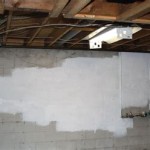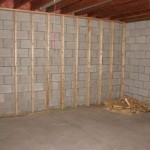How To Cement a Basement Floor
Cementing a basement floor, more accurately described as placing a concrete slab, is a multi-step process requiring careful planning and execution. A properly installed concrete floor provides a durable, moisture-resistant, and level surface suitable for various finishes. This article outlines the necessary steps to successfully cement a basement floor.
Site Preparation and Planning
The initial phase involves preparing the existing basement floor and gathering the necessary materials and tools. Careful planning ensures a smooth and efficient workflow.
- Clean the area: Thoroughly clean the existing basement floor. Remove any debris, loose soil, or existing flooring material. A clean surface allows for proper compaction and bonding of the subsequent layers.
- Compact the soil: Compact the existing soil using a hand tamper or a mechanical compactor. Proper compaction minimizes settling and prevents cracks in the concrete slab.
- Install a vapor barrier: Lay down a heavy-duty plastic vapor barrier over the compacted soil. Overlap the seams by several inches and tape them securely. This barrier prevents moisture from migrating up through the concrete.
- Plan drainage: If drainage is a concern, install a perimeter drain system before laying the vapor barrier. This system directs water away from the foundation and prevents hydrostatic pressure buildup.
- Calculate materials: Accurately calculate the volume of concrete needed based on the dimensions of the basement. Order slightly more concrete than calculated to account for spillage and variations in the floor level.
Formwork and Reinforcement
Formwork contains the concrete pour, ensuring the desired slab thickness and shape. Reinforcement adds structural strength to the concrete slab.
- Build formwork: Construct formwork using pressure-treated lumber or other suitable material. Securely anchor the forms to prevent movement during the concrete pour.
- Install reinforcing mesh: Place wire mesh or rebar over the vapor barrier, supported by chairs or bricks, to reinforce the concrete slab. This reinforcement increases the slab's load-bearing capacity and helps prevent cracking.
- Expansion joints: Incorporate expansion joints around the perimeter of the slab and at any columns or other structural elements. These joints allow for expansion and contraction of the concrete due to temperature changes, reducing the risk of cracking.
Concrete Placement and Finishing
This stage involves pouring, leveling, and finishing the concrete. Proper technique is crucial for achieving a smooth, durable surface.
- Pour the concrete: Pour the concrete into the formwork, ensuring even distribution. Use a shovel or rake to spread the concrete and fill all corners and edges.
- Level the concrete: Use a screed board to level the concrete surface to the desired height. Work the screed board back and forth across the formwork, removing excess concrete and filling any low spots.
- Float the concrete: Once the concrete has begun to set, use a bull float to smooth the surface and further remove any imperfections. This process also helps to embed aggregate and bring a layer of cement paste to the surface.
- Edge the concrete: Use an edging tool to round the edges of the slab where it meets the formwork. This creates a neat, finished appearance and helps prevent chipping.
- Trowel the concrete: After the concrete has sufficiently hardened, use a steel trowel to create a smooth, hard finish. Multiple troweling passes may be necessary to achieve the desired level of smoothness.
- Cure the concrete: Allow the concrete to cure for a minimum of 7 days, keeping it moist by spraying it with water or covering it with plastic sheeting. Proper curing is essential for achieving maximum strength and durability.
Post-Placement Considerations
After the concrete has cured, certain considerations ensure the longevity and functionality of the new floor.
- Remove formwork: Carefully remove the formwork once the concrete has reached sufficient strength.
- Apply sealant (optional): Consider applying a concrete sealant to further protect the surface from moisture and staining. This is especially important if the basement will be used as living space.
- Install flooring (optional): Once the concrete is fully cured and any sealant has dried, flooring materials such as carpet, tile, or laminate can be installed.
Safety Precautions
Working with concrete requires careful attention to safety.
- Wear appropriate personal protective equipment (PPE): Always wear safety glasses, gloves, and dust masks when working with concrete to prevent eye irritation, skin burns, and respiratory problems.
- Ensure adequate ventilation: Work in a well-ventilated area to avoid inhaling concrete dust and fumes.
- Handle wet concrete with care: Wet concrete is heavy and can cause strain or injury. Use proper lifting techniques and seek assistance when moving heavy objects.

How To Stain Concrete Basement Floor Diy Guide

Re Cementing Basement Floor

A Guide To Stained Concrete Basement Floors

15 Diy Basement Flooring Ideas Affordable Options For Basements

How To Refinish Concrete Floors In A Basement Semigloss Design

Stained Concrete Basement Floor Ideas

Post Flood Cleanup How To Clean A Concrete Basement Floor Csg Renovation

What To Know About Waterproofing A Concrete Basement Floor

Re Cementing Basement Floor

Stained Concrete Basement Floor Ideas
Related Posts







